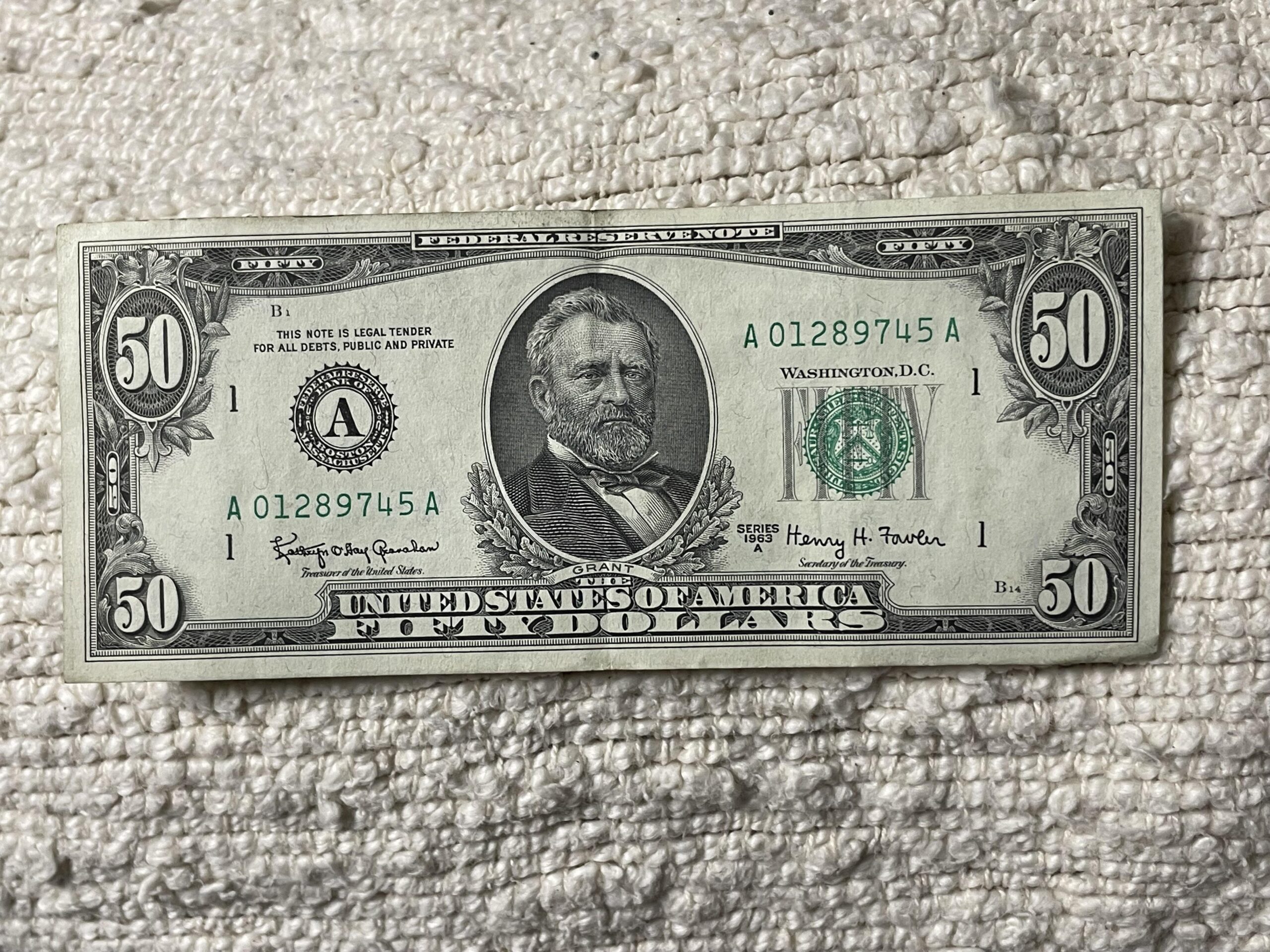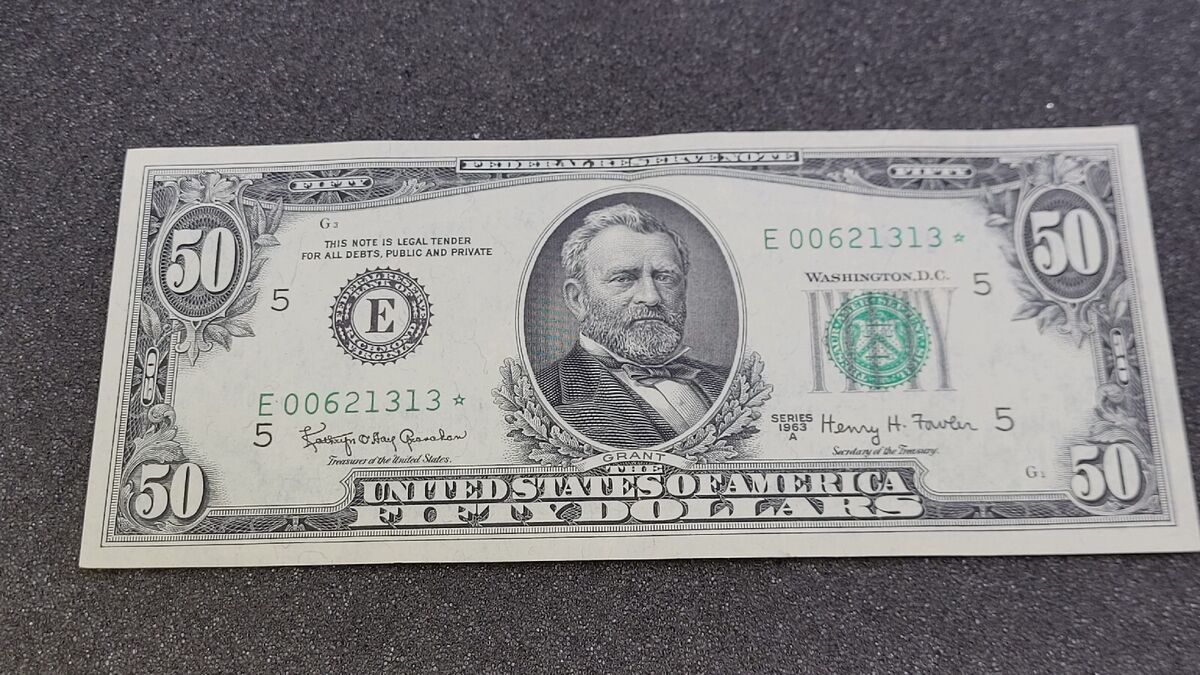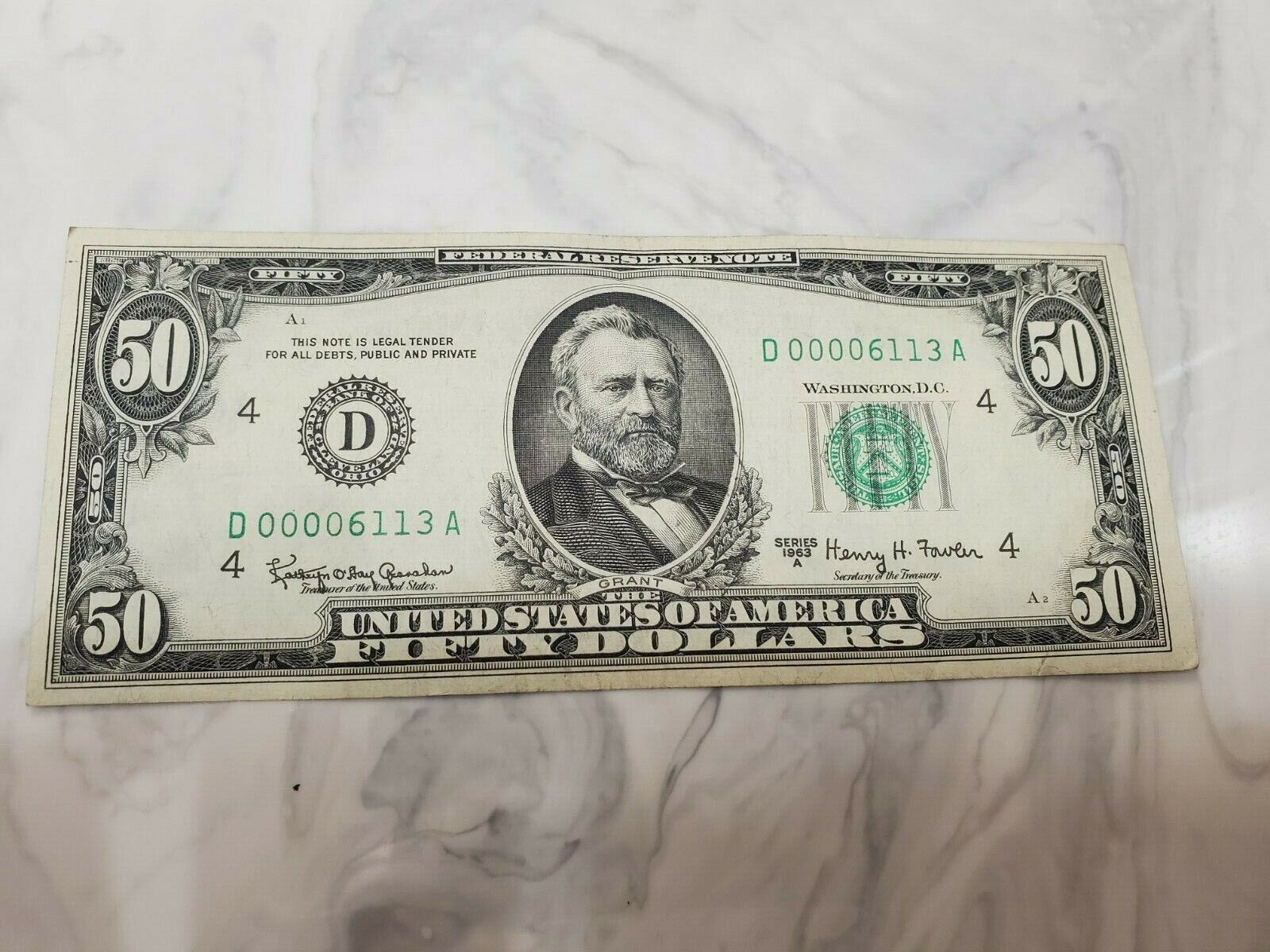The 1963 50 dollar bill holds an interesting place in the world of currency collecting. While most 1963 fifty dollar bills are not particularly valuable, certain versions can fetch a higher price due to their rarity, condition, or specific characteristics. In this article, we will explore the history, specifications, and value factors that affect the worth of the 1963 $50 bill.
Additionally, we will discuss star notes, grading systems, and the significance of the 1963 series in the context of US currency.

Understanding what affects the value of these bills can help you make informed decisions if you come across one.
The 1963 50 Dollar Bill: Overview and Specifications
The 1963 50 dollar bill was issued as part of the Federal Reserve Note series, which marked the final time that a portrait of Ulysses S. Grant, the 18th President of the United States, would appear on the $50 bill.
This particular series of currency is commonly referred to as the 1963 series, which includes both the standard notes and the special replacement notes known as star notes.
- Denomination: $50.00 USD
- Type: Federal Reserve Note
- Portrait: Ulysses S. Grant
- Series: 1963A
- Additional Features: The 1963 series featured the addition of the motto “IN GOD WE TRUST” on the reverse side of the bill, above an image of the US Capitol Building. This phrase had been used on coins since the 19th century but was added to paper money in 1963.
While the standard $50 bill from 1963 remains widely available, its value is influenced by factors such as condition, rarity, and special markings (e.g., star notes).
In this regard, a simple $50 bill might hold little more than face value, but rarer variants could be worth much more.
Value Of A 1963 50 Dollar Bill
The worth of any collectible currency is largely influenced by its condition. For the 1963 fifty dollar bill, there are several levels of grading that are used by currency professionals to determine the bill’s market value.

These grades range from circulated notes to uncirculated notes, with each grade significantly affecting the price. Here’s an overview of the most common grading terms:
- Very Fine (VF): These bills have been circulated but still retain a relatively crisp appearance. They may show signs of wear, including creases and folds, but they remain in good overall condition. A 1963 $50 bill in very fine condition can generally sell for around $65-70.
- Extremely Fine (XF): Bills in this condition show only light signs of circulation, such as a few creases or folds, but they retain almost all of their original crispness. A 1963 fifty dollar bill in extremely fine condition may be valued at around $75-80.
- Choice Uncirculated (MS 63): This is the highest grade of condition for a bill. An uncirculated 50 dollar bill in MS 63 condition shows no signs of wear or handling and is still crisp, fresh, and well-centered. A 1963 fifty dollar bill that is MS 63 graded can command a price of $95-125 or more.
Star Notes: Rarity and Value
In addition to regular 1963 fifty dollar bills, collectors often seek out star notes, which are replacement bills printed by the Federal Reserve. These star notes are issued when a bill is damaged during the printing process and needs to be replaced.
Each star note has a star symbol at the end of its serial number, which differentiates it from regular notes.
Due to their rarity, star notes tend to be worth more than standard bills. The 1963 series of star notes generally carries a higher price, even in less-than-perfect condition.
For example, a 1963A series $50 star note in very fine condition might be worth $65, while the same note in uncirculated condition with an MS 63 grade could fetch upwards of $175.
Notably, star notes issued from certain Federal Reserve Banks, including those in Boston, Cleveland, Dallas, Kansas City, and Minneapolis, are often more valuable than those from other regions.
If you find a star note among your collection, it may be worth having it appraised for its potential to command a premium.
How Much Was $50 Worth in 1963?
Understanding the value of money over time can add another layer of insight into the worth of a 1963 fifty dollar bill. While its face value is still $50 today, the purchasing power of $50 in 1963 is quite different from its value today.
According to inflation data, $50 in 1963 is equivalent to approximately $515.69 in today’s currency, representing an increase of $465.69 due to inflation over the last 62 years. The average annual inflation rate between 1963 and 2025 has been about 3.84%, resulting in a cumulative price increase of 931.39%.
This means that while the 1963 fifty dollar bill still holds the same face value, the worth of that amount of money has significantly decreased in terms of what it can buy.
Paper Money vs. Coins: What Makes The 1963 $50 Bill Special?
While coins have long been a popular focus for collectors, paper money is just as collectible, and the 1963 fifty dollar bill is an example of a highly sought-after paper note. Collectors value paper money not only for its history but also for its physical attributes, such as the design, ink, and security features that differentiate it from other bills.
For example, the portrait of Ulysses S. Grant on the 1963 $50 bill is one of the defining characteristics of the note. Additionally, the addition of the “IN GOD WE TRUST” motto makes this particular series even more noteworthy from a collector’s perspective.
Error Notes: What Are They and How Do They Impact the Worth of a 1963 $50 Bill?
Another aspect of the 1963 fifty dollar bill that may affect its value is the potential for error notes. These are bills that were printed with mistakes, such as misprints, misalignments, or unusual ink variations. Error notes are often valuable because they are unique and rare, making them highly desirable to collectors.
Common errors in paper money printing can include misprints, where a note’s design appears off-center, or inverted serial numbers. If you discover an error on a 1963 50 dollar bill, it’s a good idea to have it evaluated by a professional appraiser, as it could significantly increase the bill’s value.
Conclusion
The 1963 50 dollar bill is a piece of currency that continues to attract attention from collectors. While most of these bills are worth their face value, rare variants such as star notes and error notes can command higher prices depending on their condition and rarity.
With historical significance, unique features like the “IN GOD WE TRUST” motto, and the enduring appeal of Ulysses S. Grant’s portrait, the 1963 fifty dollar bill remains an important part of American currency history.
As we have seen, the worth of the 1963 50 dollar bill can fluctuate based on several factors, including condition, rarity, and special features. Keep an eye out for these interesting notes, and you might just find that the 1963 fifty dollar bill is more valuable than you first thought.

